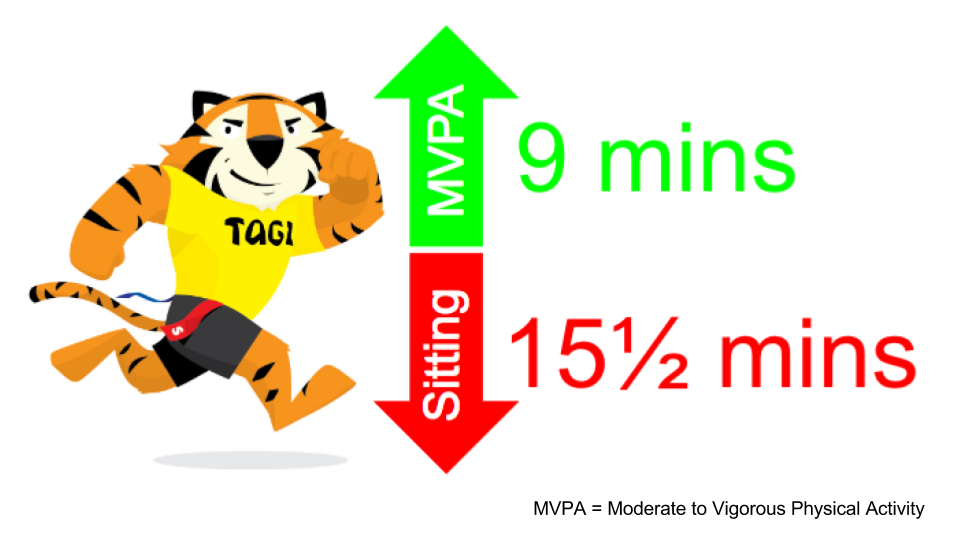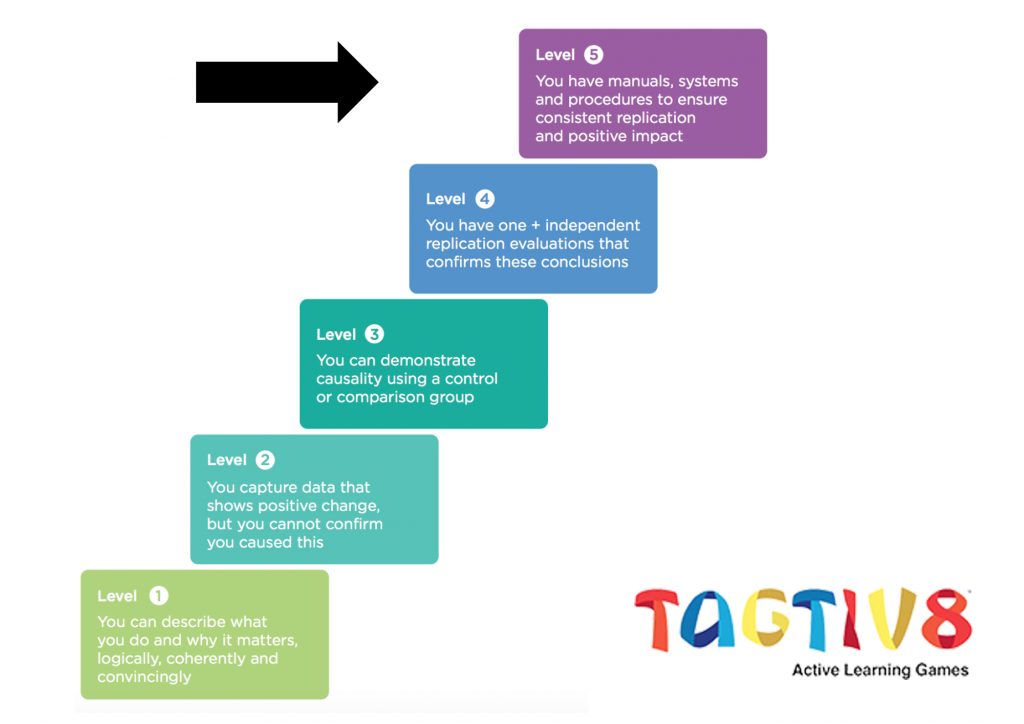Proving Impact – Research by Leeds Beckett University
It’s all well and good having smiles and anecdotes about Physically Active Learning (PAL) from teachers:
“I didn’t know he could do that. He’s never done that in a maths lesson…he’s never shown that in his maths book.”
The words of a teacher from Durham, with whom we were co-delivering our prototype active learning programme. Teachers in schools around the UK have subsequently echoed similar phrases during our PAL sessions.
As to the thoughts of the children:
“I used to think I was rubbish at Maths – but now I know I’m not!”
“WOW! I am so proud of myself. I didn’t think I could think that hard!”
“That game was awesome – it takes a lot to get me to do maths!”
According to Bryn Llewellyn, founder of Tagtiv8: “We know that something magical happens when teachers take their children outdoors to play with numbers – when their Moderate to Vigorous Physical Activity (MVPA) kicks in. The extra blood flow, oxygen and glucose to the brain improves learning abilities.”
However, people want the facts and data. Real research is needed – not just a case study.
Robust Research
With this in mind, we approached Dr. Andy Daly-Smith and fellow researchers at Leeds Beckett University to test out our PAL approaches. We wanted to assess whether the anecdotal evidence was true. The aim was to evaluate the impact of Tagtiv8 maths lessons on both physical activity and maths performance.
Initial discussions with Dr. Andy Daly-Smith reiterated the international research:
“Lesson times are the most inactive times in a child’s life.”
In the study, children in KS1 and KS2 from a primary school in Leeds were baseline tested before being randomly allocated to groups; taking part in either a seated classroom lesson or a Tagitv8 active learning lesson.
Research Findings
Commenting on the results of the tests, Andy Daly-Smith said: “The results showed that pupils who took part in the Tagtiv8 lesson achieved over nine minutes more MVPA compared to the traditional classroom lesson. They spent 15 minutes less in sedentary time.”
“There is strong evidence to support the implementation of Tagtiv8 lessons to increase physical activity during traditional classroom lesson time. One 45-minute Tagtiv8 lesson can provide children with 10 minutes MVPA which is one third of the 30-minute in school Obesity Plan physical activity recommendation.”
“When it came to assessing whether active learning led to better academic outcomes we saw promising results. Overall, there were small improvements for pupils who learnt in an active way. Further, those pupils who were most active in the Tagtiv8 lessons seemed to have the greatest benefits. This suggests activity may play a key role in enhancing learning. Additionally, lower ability children, who took part in the Tagtiv8 lesson maintained their academic performance whereas pupils in the traditional classroom lesson decreased. There were improvements in speed and accuracy in Mathematics, as well as better concentration levels.”
To find out more about the research, the key findings and video visit the Leeds Beckett University website. The full report can be accessed here.
NESTA Standards of Evidence
By way of validation, Tagtiv8 featured in a joint publication produced by UK Active Research Institute, Public Health England and the National Centre for Sport and Exercise Medicine. This report was designed to offer practical guidance and support to those delivering physical activity interventions across the UK and give them an insight to how useful their work was. This was scored through a NESTA rating – Tagtiv8 are proud to announce they received the highest rating of 5. This was the first time that a NESTA rating of 5 has been awarded in this field and Tagtiv8 were one of only nine organisations to receive it that year.
What Next? Looking Ahead…
The challenge now is to get the active learning message and evidence out there – to the decision-makers and practitioners in both education and health. Schools are incredibly busy places with time and money in short supply. Like the Head Teacher in the video, once school leaders see the games in-situ with their learners, ‘they get it’. They realise that core subjects do not need to be taught or learned while sitting down. This will help the Chief Medical Officer for England realise her aim of getting all children and young people sitting less and moving more – by engaging in MVPA for at least 60 minutes every day.
As regards further research, the School of Psychology at Leeds University have secured funding from Waterloo Foundation. Dr. Andy Daly-Smith commented: “This allows us the opportunity to assess the impact of the Tagtiv8 PAL programme over a school year. It would be great to see if small improvements accumulated over time could lead to substantial improvements in the longer term, especially for those who are most in need.”
Global Research
There is a growing body of evidence that demonstrates the impact of PAL. We recommend the following:
- Psychology Today article by Christopher Bergland – featuring findings by Emma Norris and Tommy van Steen
- Systematic Review of PAL and Classroom Movement Breaks – based on work of Dr Andy Daly-Smith, Professor Jim McKenna, Steve Zwolinsky, Andrew Marley and researchers from Northumbria University and Georgia University
Please signpost us to other research and we will add it here.



